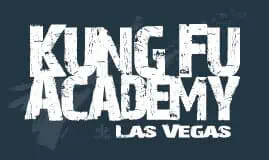Bruce Lee wasn’t just a martial arts icon. He was also a philosopher of combat and he actually created his own style of martial arts. The fighting system that he created is called Jeet Kune Do. In this new system, he distilled fighting into 5 brutally efficient principles.
One of the most practical frameworks he taught is the Five Ways of Attack.
These are not random techniques. The 5 ways of attack are categories. Techniques from any style of martial arts can fall into these 5 categories. The 4 ways of attack teach you how to initiate and land offense against an opponent.
Bruce believed that understanding these five approaches gives a fighter endless options and adaptability.
1. Single Direct Attack (SDA) Also called Single Angulated Attack
- The most basic and sound attack.
- One committed, direct motion toward a vital target with no feint or preparation. Usually incorporating the rules of economy of motion
- Example: A straight lead punch (or finger jab to the eyes) launched from a natural guard. Most often with the power of the person's full body weight behind it.
- Bruce’s favorite punch: the famous JKD straight lead—the fastest hand technique a human can throw.
- Key principle: “The fastest distance between two points is a straight line.”
- Risk: High. If it misses or is parried, you’re exposed.
- When this works: Against an unprepared or slower opponent, it ends fights almost instantly.
2. Attack by Combination (ABC)
- A rapid series of strikes designed to overwhelm the opponent’s guard.
- Bruce hated long, pre-planned combinations (like in sport karate). However, he did love short, explosive 2–4 strike bursts that flow naturally.
- Classic example from kickboxing: Jab → cross → hook → low side kick.
- Your goal isn’t to land every shot, rather it is to create progressive openings in the opponents defense as the opponent reacts to each strike.
- Bruce: “The second and third strikes are only possible because of the first.”
3. Progressive Indirect Attack (PIA)
- Probably Bruce’s personal favorite and the hallmark of advanced JKD.
- You feint or threaten one line/target, forcing a reaction, then instantly attack a different (now open) line.
- Example: You feint a low kick to make him drop his hands → explode with a finger jab to the eyes.
- Or: You fake high with the lead hand → slip outside and crash in with a straight blast while the opponent raises his guard.
- This is pure deception. When married to explosive speed, it can become deadly. Bruce called it “attacking what is not there, then hitting what is.”
4. Attack by Drawing (ABD)
- This strategy is deliberately leaving an opening to bait the opponent into attacking, then intercepting or countering as he commits.
- This is Jeet Kune Do’s “trap” concept in its purest form.
- Classic example: Drop your lead hand slightly → the moment he shoots a punch, you stop-hit or pak sao + straight blast him on the way in.
- Bruce’s famous line: “If he attacks, he hits nothing. When I attack, I hit everything.”
- This requires you to have exquisite timing and emotional control. It is perfect for smaller fighters against bigger opponents.
5. Hand (or Foot) Immobility Attack (HIA / FIA) The most sophisticated and least understood
- You attack simultaneously with a block/trap/parry and your strike—immobilizing the opponent’s weapon at the moment of impact.
- Essentially a stop-hit with a trapping element.
- Example: As he throws a hook, you simultaneously pak sao (slap-block) his hooking arm while driving your rear cross into his face. Your trapping hand and striking hand arrive at the same time.
- Bruce also applied this with kicks: side-kick his lead leg the exact instant you jam his punch with a bil jee (deflecting hand).
- Timing here is measured in hundredths of a second. This is the “no inch punch” philosophy applied to real combat.
Why These Five Strategies Matter More Than Any Technique
Bruce Lee hated rigid martial arts styles. He despised long lists of techniques that students would have to memorize in order to get to the next belt level.
Instead, he wanted his students to think in principles and strategies, not memorized forms. The Five Ways of Attack give you a mental checklist in the middle of chaos:
- “Is a single direct shot open?” → SDA
- “Is he tight? Overwhelm him.” → ABC
- “He’s defensive—fake and go.” → PIA
- “Let him come to me.” → ABD
- “I’ll jam him the instant he moves.” → HIA
If you can master these five approaches, you can plug in almost any tool or technique (fist, finger jab, elbow, knee, kick, grapple) and still be fighting using pure Jeet Kune Do.
As Bruce himself wrote:
“The highest technique is to have no technique. My technique is a result of your technique—my movement, a result of your movement.
”The Five Ways of Attack are your keys to that philosophy.
